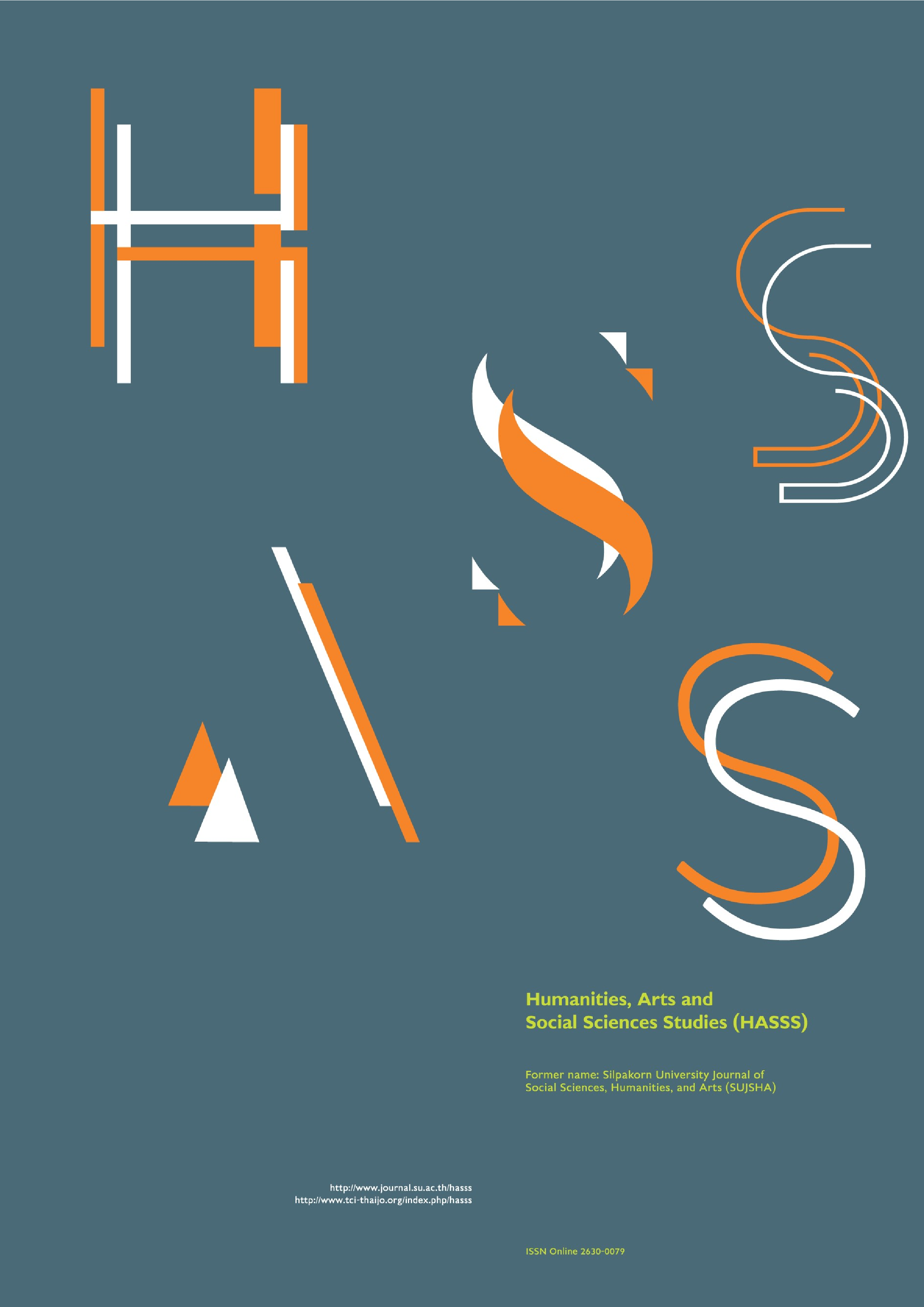Creative textile: The interactive art installation from Thai silk
Main Article Content
Abstract
Although Thai silk fabric is well-known for its unique characteristics including shininess, smoothness, luxury, and cultural richness; its weaving technique is still limited. A textile innovation knowledge and creativity will serve as the main developmental process. The typical looks of Thai silk include vivid colors, and flat, non-functional textures that make it easily recognizable as an old-style, traditional product. Nevertheless, the finished products from Thai silk are mostly fabric and clothing, creating new texture and function by combining Thai silk yarn with other types is still an uncommon practice due to the belief that it would decrease Thai silk value. This project was aimed to develop textile surface design from Thai silk yarn with the existing resources in Thailand. The modern textile innovations will be exploring and experimenting with the weaving technique and combining with other yarn types. The objective is to enhance value of the fabric surface to be more than Thai traditional fabric but utilize them as an art form, not as a conventional application in clothing industry. During the design process, the data information from in-depth interviews for users’ perspectives about Thai silkworm processing and species, Thai silk market, and textile innovations were collected. These key data will be analyzed and synthesized for exploring and experimenting on the new surface design for Thai silk. All findings from the experiment will be presented as Art installation based on “Art as Experience” theory for the audience to experience the value of Thai silk. Thai silk can be functional and creativity which are the key elements from each exploration that can be utilized to textile surface designs. Finally, the project will provide knowledge of Thai silk to silk users and designers in different ways of use, so the local Thai silk will become more attractive respectively.
Downloads
Article Details

This work is licensed under a Creative Commons Attribution-NonCommercial-NoDerivatives 4.0 International License.
All rights reserved. Apart from citations for the purposes of research, private study, or criticism and review,no part of this publication may be reproduced, stored or transmitted in any other form without prior written permission by the publisher.
References
Charmaz, K. (2000). Grounded theory: Objectivist and Constructionist Methods. In Handbook of Qualitative Research, edited by N. K. Denzin and Y. S. Lincoln, pp. 509-536. New York: Sage.
Charmaz, K. (2006). Constructing Grounded Theory: A Practical Guide through Qualitative Analysis. London: Sage Publications.
Collis, J. and Hussey, R. (2003). Business Research: A Practical Guide for Undergraduate and Postgraduate Student. Basingstoke: Palgrave Macmillan.
Datta, R. K. and Nanavaty, M. (2007). Global Silk Industry: A Complete Source Book. New Dehli: APH Publishing Corporation.
Denzin, N. K. and Lincoln, Y. S. (2005). Introduction: The Discipline and Practice of Qualitative Research. In The Sage Handbook of Qualitative Research, edited by N. K. Denzin and Y. S. Lincoln, pp 1-32. London: Sage Publications Ltd.
Dewey, J. (1934). Art as Experience. New York: Capricorn.
Irenebrination (2015). Reflect the Existing Reality to Create a New One: Anrealage S/S 16. [Online URL: https://www.irenebrination.com/irenebrination_notes_on_a/2015/09/anrealage-ss-16.html] accessed on March 30, 2020.
Khattab, T. A., Rehan, M. and Hamouda, T. (2018). Smart textile framework: Photochromic and fluorescent cellulosic fabric printed by strontium aluminate pigment. Carbohydrate Polymers 195: 143-152.
Kurlantzick, J. (2011). The Ideal Man: The tragedy of Jim Thompson and the American Way of War. New Jersey: Wiley.
Önlü, N. and Yaşar, N. (2011). Visual textures combined with metallic, retro-reflective and stainless steel yarns in semi-transparent fabrics. Research Journal of Textile and Apparel 15(1): 22-32.
Sørensen, F., Mattsson, J. and Sundbo, J. (2010). Experimental methods in innovation research. Research Policy 39(3): 313-322.
The Culture Trip (2016). The Art of Ernesto Neto: A Trip into The Ludic. [Online URL: https://theculturetrip.com/south-america/brazil/articles/the-art-of-ernesto-neto-a-trip-into-the-ludic/] accessed on March 30, 2020.


